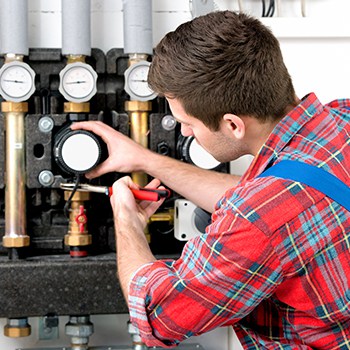Portable Appliance Testing (PAT) is where movable electrical appliances are tested to ensure they are safe to use. This test is an essential aspect of a responsible and organised landlord in the UK. The PAT involves visual inspection of appliances and plugs, cables, insulation. Therefore, any prospective landlord should know the basics regarding the PAT test. This test detects issues on appliances early before the tenant moves in, and is proof that you played your part to ensure that the property is safe.

About 90 percent of faults are detectable through visual inspection. Therefore, it’s essential to check appliances for signs such as the following prevents potential hazards:
- Burnt wires
- Loose screws
- Wear and tear
- Damaged to cables and plugs
It’s essential for a landlord to hire a professional with certified PAT training to detect potential problems on all appliances. This is highly recommended before a new tenant moves in and at regular intervals during the tenancy period.
Ensuring tenant safety
Landlords must ensure the safety of all tenants by making a PAT test part of their property management. It’s essential to ensure that the electricals are safe for use for the duration of the tenancy in your property. A PAT test done by a professional is protection in case electrical appliances develop problems such as a short circuit or catch fire. You would have played your part to ensure that your property is safe for tenants.
Landlord best practices
PAT certificate
The landlord is tasked with the responsibility of ensuring that no electrical appliances in their property will harm the tenants in any way. Checking all appliances before a new tenant moves in is required. Other smaller appliances such as microwaves, kettles, fans, and lamps need testing every two years. Additionally, you must get a portable appliance test certificate PAT in London for other larger electrical fixtures. These include a refrigerator, dishwasher, oven, and washing machine.
Instruction manuals
The landlord must give tenants instruction manuals for every electrical appliance in the property. Additionally, the landlord must strongly advise the tenants to read and follow all the instructions before using the appliances. It’s up to them to check the manual or not. However, you will have played your part to ensure that they are safe while using any of the electrical appliances in your property.
Check for a CE mark
It’s worthwhile to check that all appliances have the CE mark. This certifies compliance with European production laws. Additionally, it means the appliances are BEAB approved with production in a factory with acceptable standards to produce market safe products. When bought new, such appliances are reliably safe and just require a visual inspection for damages before fixing them in your property for use by tenants.
In summary
It’s a smart move for a landlord to get all electrical appliances in their property PAT tested before a new tenant moves in. It gives peace of mind and protects you from legal implications in case of accidents. Additionally, the test catches potential issues on your appliances before the tenant moves in saving you time, money, and stress.
James Dean is a content handler and blogger who loves to write on the quality of topics like commercial and residential, Home improvement recycling for their readers and followers. Dean has a fantastic ability to make the most complex subject matter easy to understand.
Post new comment
Please Register or Login to post new comment.